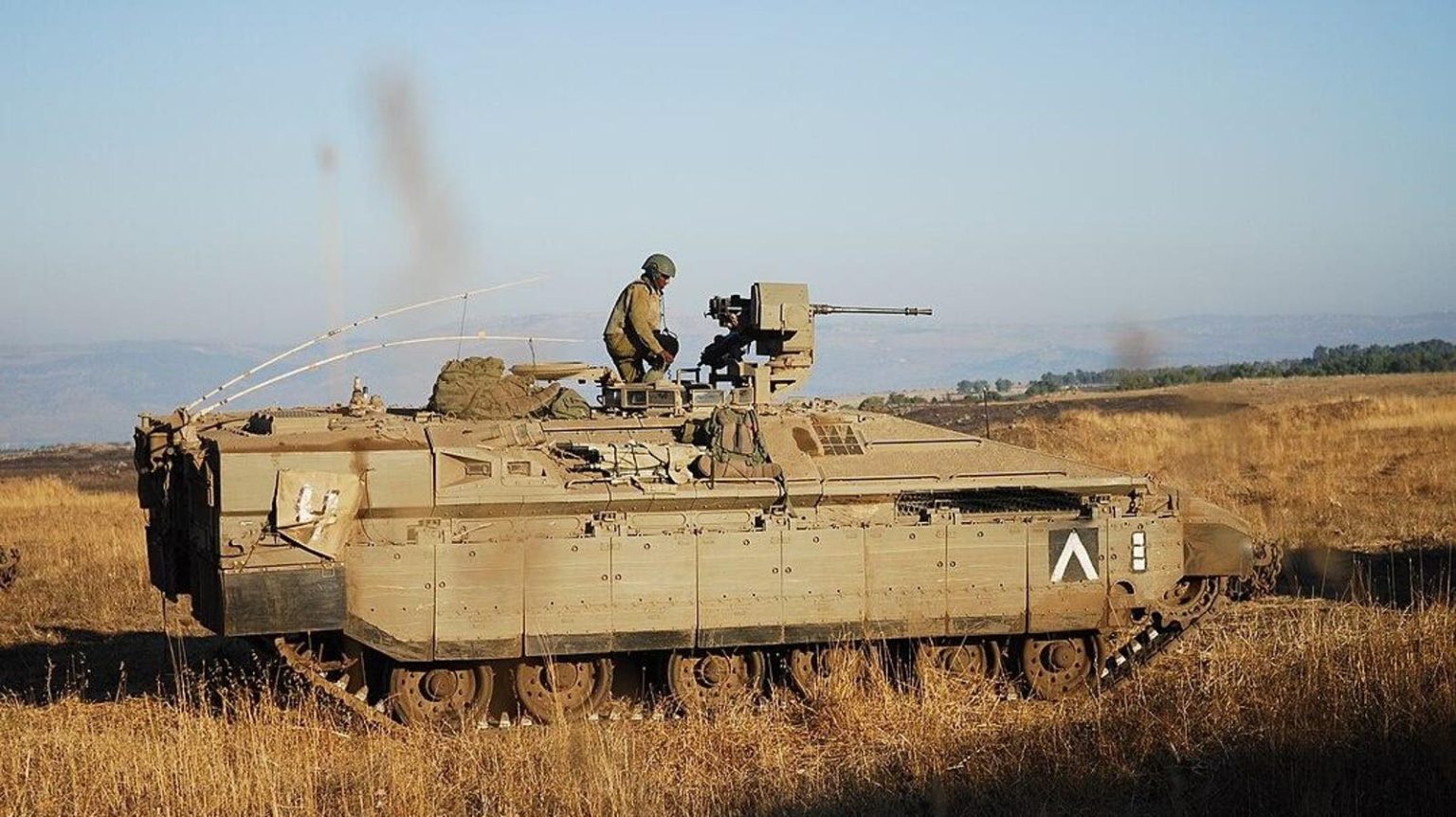When Hamas terrorists breached the border wall surrounding the Gaza Strip on Oct. 7 and infiltrated southern Israel, initiating a shocking campaign of abduction and murder, they also overran an Israeli army base in Nakhal Oz.
At the base were no fewer than 13 of the army’s unique super-heavy armored personnel carriers, including a dozen 49-ton Achzarits and at least one 70-ton Namer. Hamas apparently captured, or burned, the APCs along with several Merkava tanks.
The Namer is special. Not just because it’s the best-protected APC in the world. But also because of the central role it played in the previous conflict in Gaza, in 2014. With tens of tons of armor on top of a turretless Merkava chassis, the Namer basically is a mobile bunker. A safe haven for Israeli infantry during even the most cataclysmic battles.
To understand why the Israeli Defense Forces prize their roughly 300 Namers, recall the bitter fighting in Gaza in July and August 2014. After Hamas terrorists kidnapped and murdered three Israeli teenagers in the West Bank, the IDF launched a retaliatory campaign. Hamas fired back with rockets, and the fighting escalated.
On July 19, the Israeli army’s Golani Brigade rolled into Shuja’iyya, a neighborhood of Gaza City that’s home to nearly 100,000 people—and which Hamas had been using as a base. The first day was quiet. Then on the second day, a Hamas rocket team emerged from a tunnel and blew up a broken-down Israeli M-113 armored personnel carrier, killing seven Israeli soldiers.
The IDF was determined to recover the APC’s wreckage and the human remains it contained. Under withering fire, Golani Brigade engineers in armored vehicles struggled to isolate and tow the wreckage. Israeli casualties mounted as a close-quarters battle raged around the engineers’ convoy.
Ultimately, six Israelis were killed in addition to the seven who died in the M-113. “The Hamas fighters showed an unexpected tenacity and were far more effective against our armored units than we’d anticipated,” a civilian adviser to the IDF’s chief of staff said at the time, according to Al Jazeera.
It was a pitched fight that eerily echoed the 1993 Battle of Mogadishu, during which U.S. Army soldiers trying to reach the crash sites of two Blackhawk helicopters found themselves surrounded by a much larger militant force.
Israeli commanders sensed their troops were about to be overrun. They made a difficult decision—to call in artillery fire and air strikes directly on Shuja’iyya. Army M-109 howitzers and air force F-16s were standing by.
Commanders ordered the infantry to pile into their Namer APCs, and close the hatches. The M-109s fired hundreds, maybe thousands, of 100-pound shells. F-16s dropped one-ton bombs. The Golani Brigade rode out the bombardment in their 70-ton Namers. Around them, scores of Hamas terrorists—and Gazan civilians—perished.
On the fourth day, Hamas’s guns finally fell silent.
The Namers did what they were designed to do, and what the obsolete M-113s no longer could do: they preserved the lives of their embarked infantry. But they also made possible a brutal, indiscriminate Israeli tactic—an urban artillery barrage—that drew harsh criticism after the war. A United Nations commission concluded the bombardment “may amount to a war crime.”
Read the full article here





